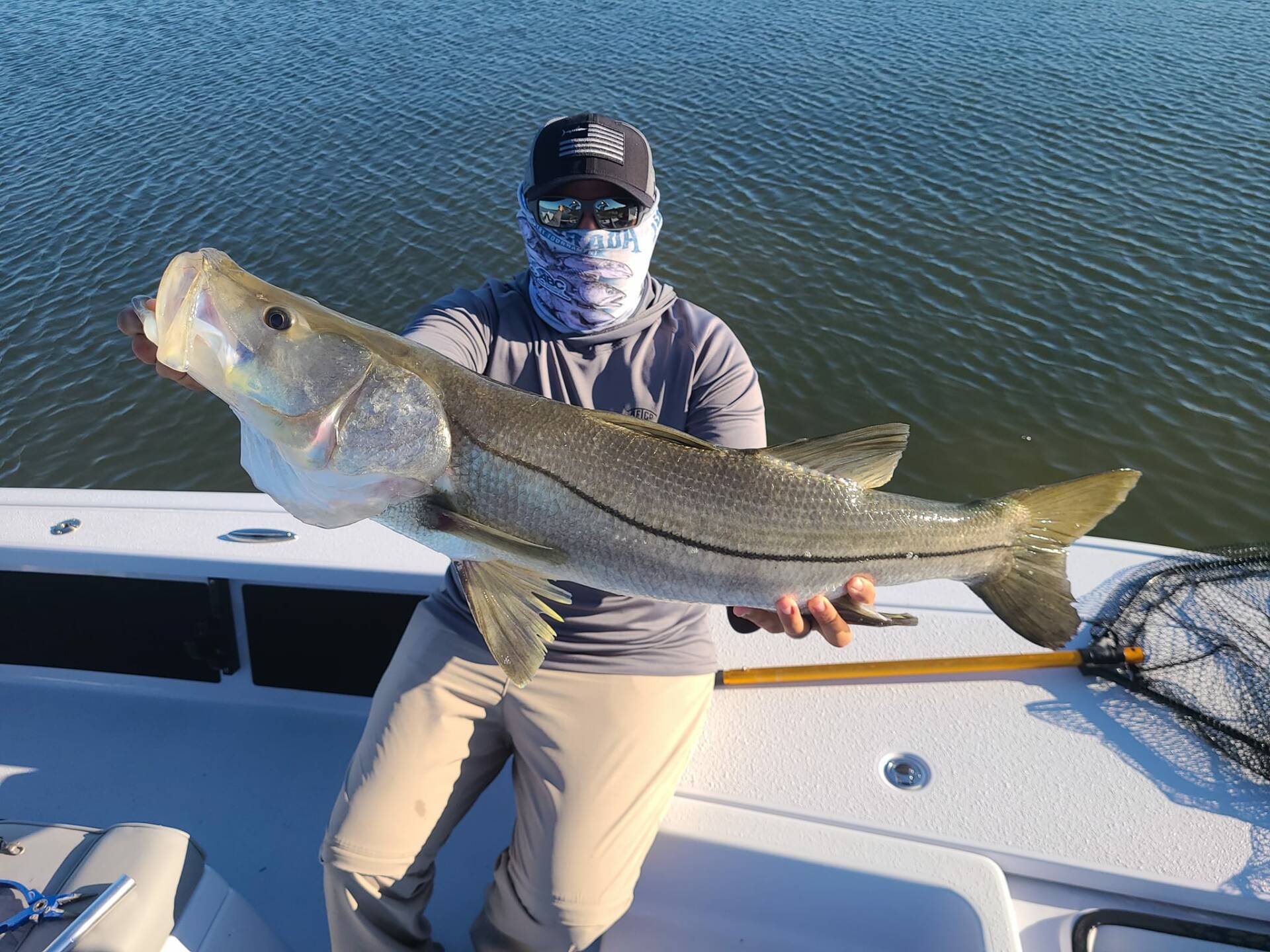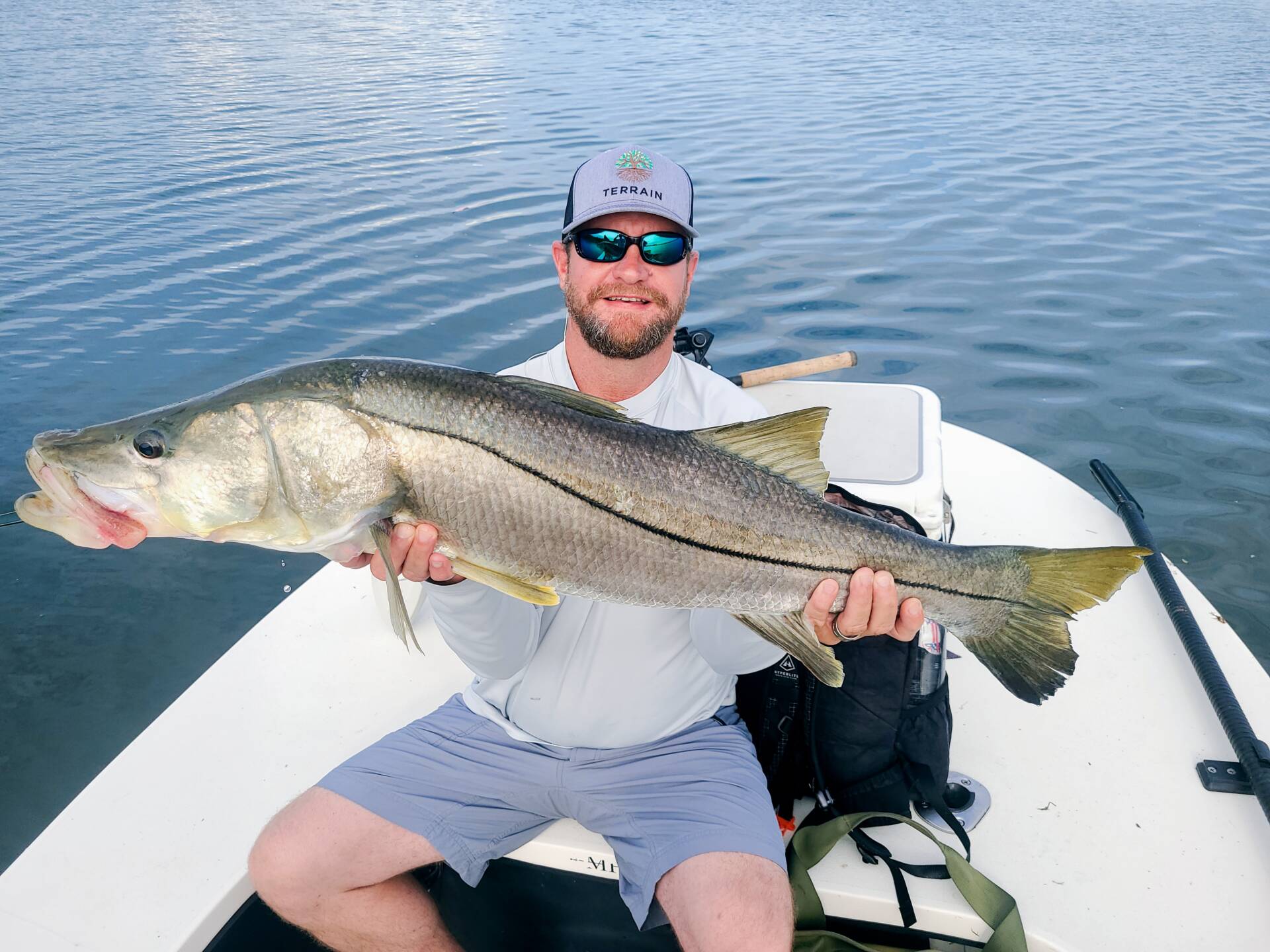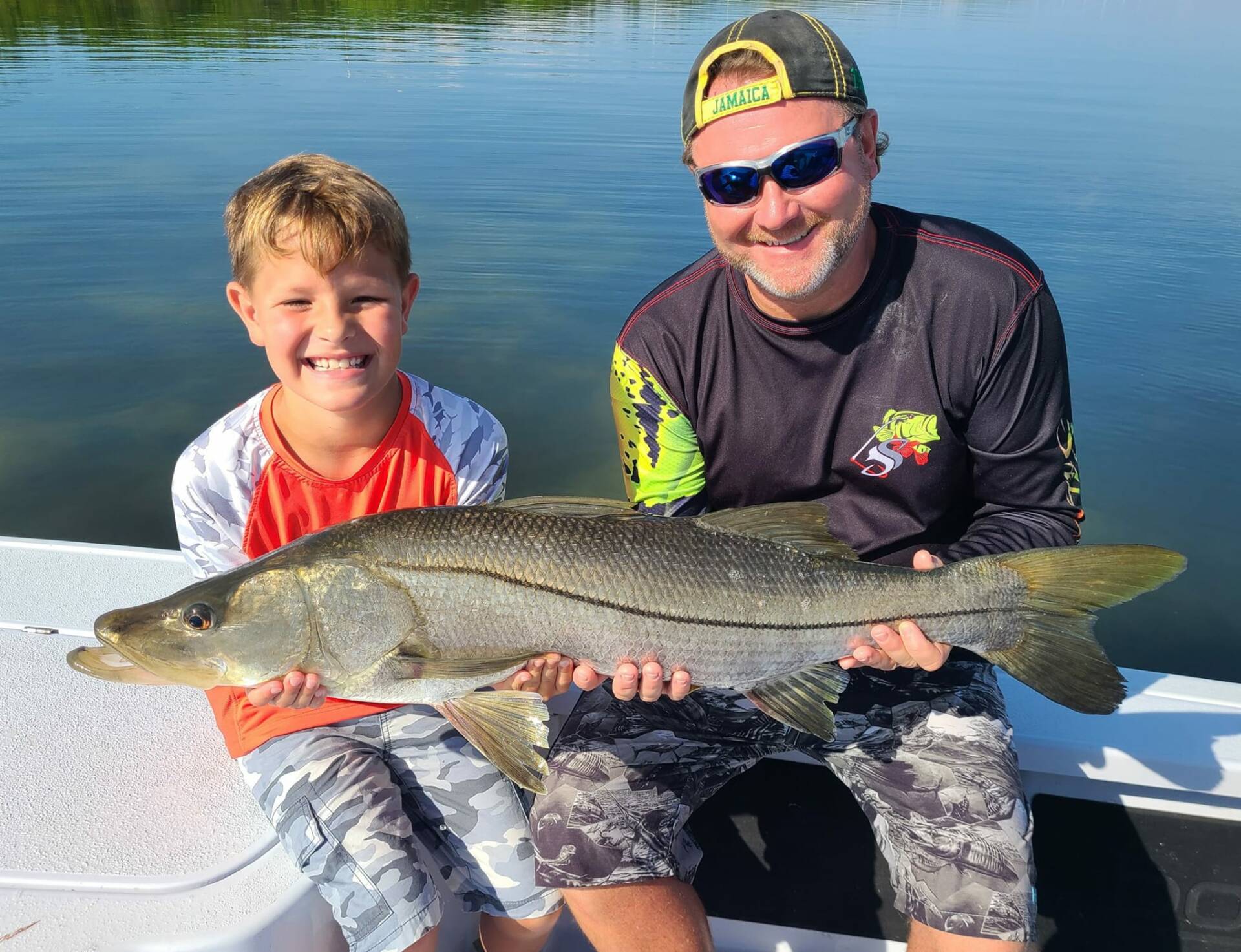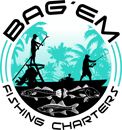Last Updated on April 4, 2025 by Eric
Snook fishing in Tampa Bay during the summer is a combination of timing, location, and understanding how this species responds to seasonal shifts. These fish are known for their power and speed, but they’re also selective in how and when they feed—especially when heat, tide, and pressure all come into play. If you want to fish for snook consistently in the summer months, it takes more than matching the hatch or showing up at a good-looking spot. This guide provides a full overview of the species, followed by clear, location-specific and season-specific tactics to help you get the most out of your time on the water. Whether you’re fishing on your own or considering a charter, the information below is designed to help you approach summer snook in Tampa Bay with purpose.
Understanding Snook as a Species
Snook are a warmwater, inshore predator that thrives in environments with moving water, structure, and access to shallow and deep zones. They are primarily ambush feeders and position themselves where current delivers bait to them with minimal effort. Their body design reflects this: they have a strong lateral line and broad tail that allows for sudden bursts of speed. Snook feed on a range of prey, including scaled sardines, pinfish, shrimp, and mullet, depending on the time of year and what’s available.
They are also sensitive to environmental change. Sudden drops in temperature or spikes in freshwater runoff can move them off a spot quickly. In colder months, they will push into rivers and deeper residential canals. During spring and fall, they tend to hold along mangroves, oyster points, and estuary edges. Summer, however, is when their biological activity peaks.
Snook are a regulated species in Florida. As of this writing, the slot limit for harvest in the Tampa Bay region is 28 to 33 inches, with one fish allowed per angler per day when harvest is open. A valid snook permit is required in addition to a Florida saltwater fishing license if you intend to harvest snook. Catch-and-release is common, especially during the closed season or around peak spawning periods in summer.

What Changes in Summer
As water temperatures rise into the mid-80s and beyond, snook behavior shifts. They become more predictable in terms of location but also more cautious during high-traffic periods. Summer is the primary spawning season, and many adult snook will stage in or near passes, beaches, and areas with heavy water exchange. At the same time, smaller males and non-spawning fish remain active inshore, especially around mangrove lines, creeks, and points with good shade and oxygen flow.
Summer snook are most active during low-light periods and when tidal movement is strong. Heat buildup throughout the day often causes fish to pull away from shallows and hold near deeper ledges or shaded edges. Rain can temporarily cool surface temperatures, but heavy freshwater runoff may push fish out of upper bay areas if salinity drops too quickly.
Beyond snook, summer also brings increased bait activity across the bay. Scaled sardines, threadfin herring, and juvenile mullet are widely available, drawing in a variety of gamefish. Redfish and trout continue to feed aggressively in early mornings, while tarpon remain active near the bridges, beaches, and shipping channels. Water clarity tends to improve on outgoing tides in the lower bay, especially after days of calm wind. Afternoon thunderstorms are common and can shift wind direction quickly, so timing and flexibility are key.
The key change in summer is that snook are more focused on movement and flow. Areas where water funnels, turns, or accelerates tend to concentrate bait—and in turn, concentrate snook.
Where to Target Summer Snook in Tampa Bay
Lower Bay Shorelines and Mangroves
The western and southern edges of Tampa Bay, from Gandy Bridge to the mouth near the Skyway, are lined with productive summer shoreline. Look for mangroves with nearby depth transitions, small feeder creeks, or oyster points that create turbulence and bait movement. Early in the morning, snook will push into as little as 12 to 18 inches of water to feed. As the sun rises, they pull back to structure with shade or drop into adjacent troughs.
Egmont Key and Fort De Soto
These areas offer some of the best summer fishing in the region. The outer edges of Fort De Soto’s grass flats and the rock structure around Egmont Key regularly hold quality fish. Focus on outgoing tides that move bait across sandbars or through deeper cuts between islands. Snook will position themselves at current breaks and edges, often sitting just outside of visible flow and striking as bait passes.
Passes and Beaches
Snook gather heavily in the passes during the summer spawn. John’s Pass, Blind Pass, and the area around Pass-a-Grille often hold both visible cruisers and deeper staging fish. Early morning and evening hours are best. Fish can often be seen cruising the troughs just off the beach, especially near points where sandbars pinch water movement. Stealth is critical in these areas. Long casts and quiet approaches produce far more than standing overhead or wading in directly.
Residential Dock Lines and Canals
In the heat of the day, dock systems offer structure, shade, and ambush points. Moving water is still important—target canals or residential areas that receive regular tidal exchange. The most productive docks often have one or more of the following: boat lifts, submerged structure, and direct access to a deeper center channel.
When to Fish
Tidal flow matters more than time of day, but both affect activity. The most productive windows for summer snook tend to be:
-
First light to about two hours after sunrise
-
Two hours before to one hour after sunset
-
Outgoing tides that coincide with low-light hours
-
Nighttime around dock lights and bridge structure
New and full moon phases generally produce stronger movement, which improves both bait activity and snook positioning. Avoid midday slack tides unless you’re fishing deep passes or under heavy shade where snook may still ambush.

How to Fish for Snook in Summer
• Approach areas with structure and moving water—snook hold where current brings food to them. Stay off the spot and make long, accurate casts to avoid pushing fish out.
• Cast upcurrent of the structure and let your bait or lure drift naturally into the strike zone. Snook face into the flow and react to movement that appears effortless.
• Use soft plastics, live bait, or suspending twitch baits depending on depth and clarity. In shallow water, keep your presentation slow and tight to cover.
• Set the hook with steady pressure, not a hard snap, especially when using circle hooks. Let the fish turn before driving the rod forward.
• If the bite slows, change your angle or switch to a smaller bait. Snook may still be present but less willing. Subtle adjustments often trigger a response.
Tackle and Setup
-
Rod: 7’ to 7’6” medium or medium-heavy fast action spinning rod
-
Reel: 3000–4000 size with smooth drag and corrosion resistance
-
Main Line: 10 to 20 lb braid depending on structure
-
Leader: 25 to 40 lb fluorocarbon; heavier for docks and passes
-
Hooks: 3/0 to 5/0 circle hooks for live bait; 1/0 to 3/0 for artificials
-
Artificial Lures:
-
Soft plastic paddle tails on 1/8 to 3/8 oz jig heads
-
Topwater plugs early or late in the day
-
Suspending twitch baits like MirrOdines
-
Bucktail jigs for deep or fast-moving water
-
Conservation and Handling
Summer is the most sensitive time for snook. Many fish are in spawning condition, and larger females are critical to the health of the fishery. If you’re catching snook during the spawn, handle them carefully:
-
Use circle hooks to avoid deep gut-hooking
-
Wet your hands before handling
-
Keep the fish in the water when possible
-
If lifting, support the body fully—not just the jaw
-
Revive the fish by holding it into the current until it swims off with force
Always check current FWC regulations. Harvest rules may shift based on local assessments, especially during or after severe weather events.

Fish Smarter This Summer with Bag’em Fishing Charters
Snook are always a challenge, but summer rewards anglers who fish with intention. When you know how they move, where they hold, and how they respond to current and pressure, you stop fishing at random and start working smarter. That’s what we do every day on the water.
At Bag’em Fishing Charters, we target summer snook across every major zone in Tampa Bay. From morning sight-casts on the beach to precision pitching under docks, we bring the conditions, the tide, and the approach together to put you where the fish are. You’ll have a plan when you step on the boat—and a clear understanding of how to make the most of each opportunity.
If you’re ready to turn a good day of fishing into a productive one, book a trip with us. We’ll put you on fish, keep you ahead of the conditions, and give you the right tools to get the job done.
Let’s fish with purpose—together.


